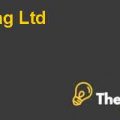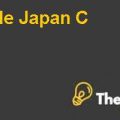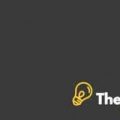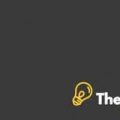
Analysis:
Economic Order Quantity Model (EOQ) and the Supply Chain Operations Reference Model (SCOR) are used to fostering operational efficiency. Furthermore, the application of business process modeling, benchmarking performance, and best practices analysis will be suitable for both the data and the issues to be addressed. Important variables that impact inventory include cost, the order size, forecasting, capacity planning, and production scheduling will be measured. Nike’s current information systems will be used as a source to achieve greater channel alignment. Additionally, the company’s current supply chain processes will be examined as a benchmark for operational efficiency. Other alternatives that will be assessed include customer satisfaction and retention, profitability, return on investment, and productivity (Slack, et al., 2013, p. 429).
Operations management at Nike is basically concerned about the issue related to controlling, forecasting, scheduling, designing and operating in its production. The outstanding management of the company is based on implementing various operational frameworks and techniques like Supply Chain Operations Reference Model. Effective inventory management is necessary as it helps in identifying the customer needs and the ways to satisfy them. The components included in operations management are production systems, manufacturing, production control, equipment maintenance, productivity analysis, materials planning, cost controlling and industrial labor relations as well. Along with all these factors another task in operations management includes inventory management and forecasting the demand accurately. Inventory management can be defined as the process of controlling and analyzing the storage and then utilizing the raw materials used in the production (Malakooti & Behnam, 2013).
During the 80s, Nike had successfully formed its system for demand management and thus, the company also has increased its number of units as well. The basic purpose of this program was to manage Nike’s inventory in an effective and efficient manner. Initially, the program went perfect but later on, it became complicated as it failed to manage multiple inventories properly. It becomes extremely critical for Nike to deal with all the orders through this system. Therefore, the company has implemented new software system that was based on SAP to meet the uneven demand and to forecast the demand in a proper way. One objective behind implementation of new software was to make reductions in order to reduce delivery time by more than 50% (Dolinsky & Anton, 2010).
The new system has been introduced for the effective SCM, and Nike’s management combined the software with its CRM applications to make it more effective in managing inventory. Nike made a contract with i2 about the installation for supportive applications like CRM and the overall cost of the software was $40 million to Nike. However, the system failed badly, and the first reason was the company’s decision of not using the primary template related to i2. The software was efficient to manage the company’s demand, but the management customizes it that leads to slowing down of the system and eventually increased the waiting time. Employee turnover was another reason as they were not comfortable with new techniques related to SCM and inventory management (Rubina et al, 2011.).
The issue became worse when the company started sending orders from it because the system was flawed and immature; it leads to the wrong estimation of demand and it overestimated the demand for the products that were not really in demand and underestimated the forecast for the products with high demand. The flawed data was then sent to all the manufacturers worldwide and thus, the company has manufactured exceptionally large number of products and that in turn increased Nike’s inventory.
Recommendations and plan of action:
Demand forecasting:
Demand forecasting is one of the most significant parts in managing the supply chain effectively. The reason behind this notion is that all activities in SCM like production, procurement and distribution are highly based on predictions. The demand can never be 100% accurate but there are various tools and techniques available like Linear Regression. With the help of linear regression, Nike can relate the demand with the time and then studying the linear trend line. In this way, Nike can make projections about the slope and identify patterns on the basis of past forecast and demand. In addition to this, Nike can also do some adjustments related to forecasting error so that accuracy level can be improved (Hyndman & Koehler, 2005).
For the calculation of the forecasted error, the company can use MAD i.e. Mean Absolute Deviation. With this, Nike would be able to forecast errors and implement a forecast control measure. Furthermore, Nike can also calculate a tracking signal to analyze the correctness of their predictions and estimations...........................
This is just a sample partial case solution. Please place the order on the website to order your own originally done case solution.













